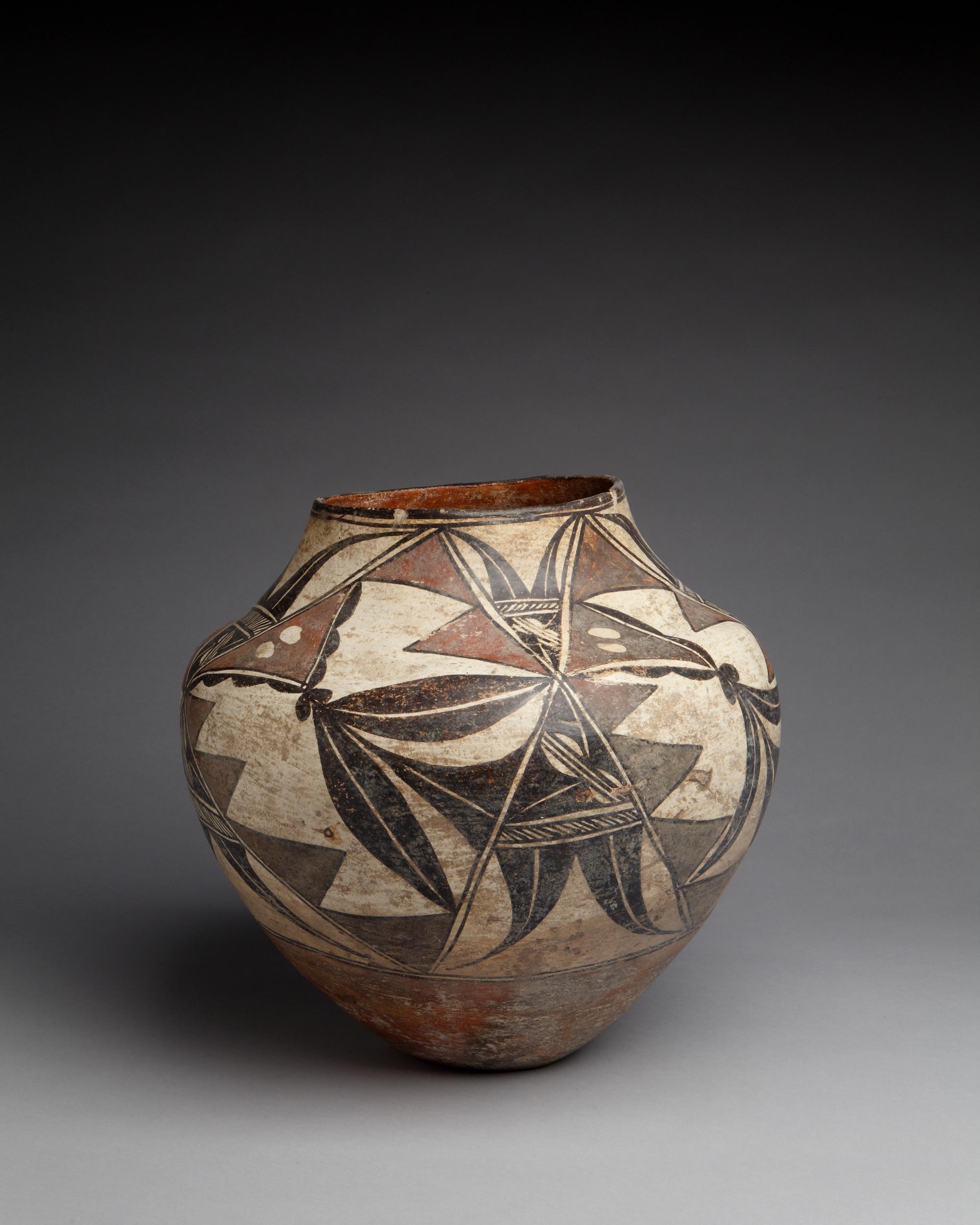
Photograph by Addison Doty. Copyright 2014 School for Advanced Research.
Water jar
Date: 1880-1900
Artist or Maker: Unknown
Dimensions:
Dimensions: 30.5 × 31.8 cm (12 × 12 1/2 in.)
Weight: 2.7 kg (5.95 lb.)
Medium: clay | paints
Credit Line: Gift of H.P. Mera, 1924.
Place Made:
Valencia, Cibola, Bernalillo, and Sandoval Counties, New Mexico, Southwest, United States, North America
Object Number: IAF.223
Not on view
Tribal Collection Review RemarksAccording to the participants in the Acoma collection review visit April 22-24, 2015 (Events Record “Collection Review: Acoma Pueblo, Review 1”): The designs on this jar includes filled geometric designs; plant designs, including leaves and possibly squash blossoms; and bird elements (see Annotated Photo in Media card). There are no pathway breaks (line breaks) apparent on the piece, but there are some chips in the paint at the rim where one could have been before being damaged. This is a heavy jar for its size, and the construction is not very refined. The interior shows areas where the vessel wall was thin, and the potter applied patches of clay in those areas to strengthen the wall. There are also many inconsistencies in the paint application; it's caked on in some places and thin in others. It’s possible the jar was made in haste or by somone who was learning, explaining the patches, and simple, inconsistent painting designs.
According to the participants in the Acoma collection review visit February 26-27, 2019 (Events Record “Collection Review: Acoma Pueblo Review 12”): The shape of a water jar is characterized by usually having a concave base (can also have a flat base) leading to a wider body and shoulder area. The shoulder, which is typically rounded but can also be sharp, leads inward and up to the neck and opening of the water jar. Historic water jars will sometimes have an indentation from the base the pot was built on (also known as a puki).
Water jars of all sizes are made and used. Medium to small size water jars are more commonly used to carry water as the weight of a filled water jar can become quite heavy. Large sized water jars would be used for storing water. Today at Acoma, water jars are still being used and made in both traditional natural and commercial materials.
In Collection(s)
Bibliography:
The Indian Arts Research Center, in collaboration with Native American community scholars, strives to present accurate collections records. Records may be updated as new information becomes available and is reviewed with the Native American community having cultural affinity to particular items. Please write to iarc@sarsf.org if you have questions or concerns related to the documentation.
